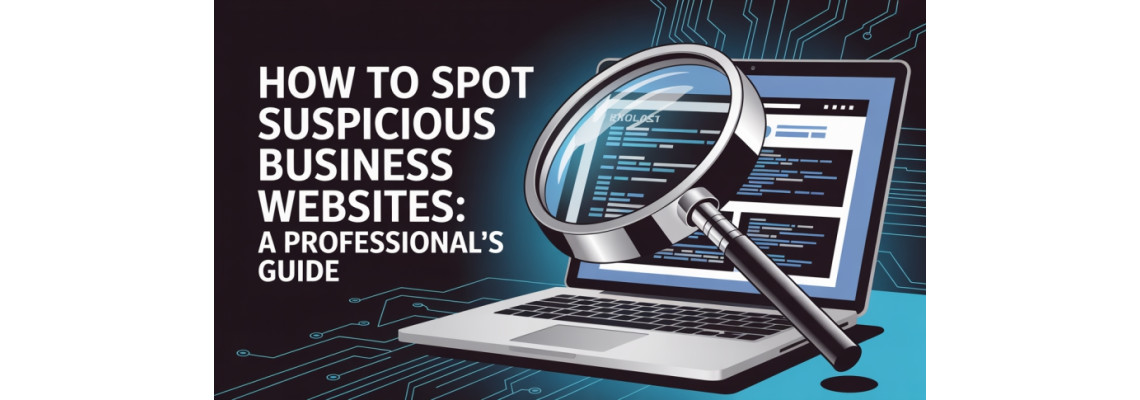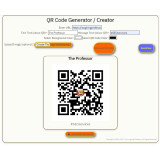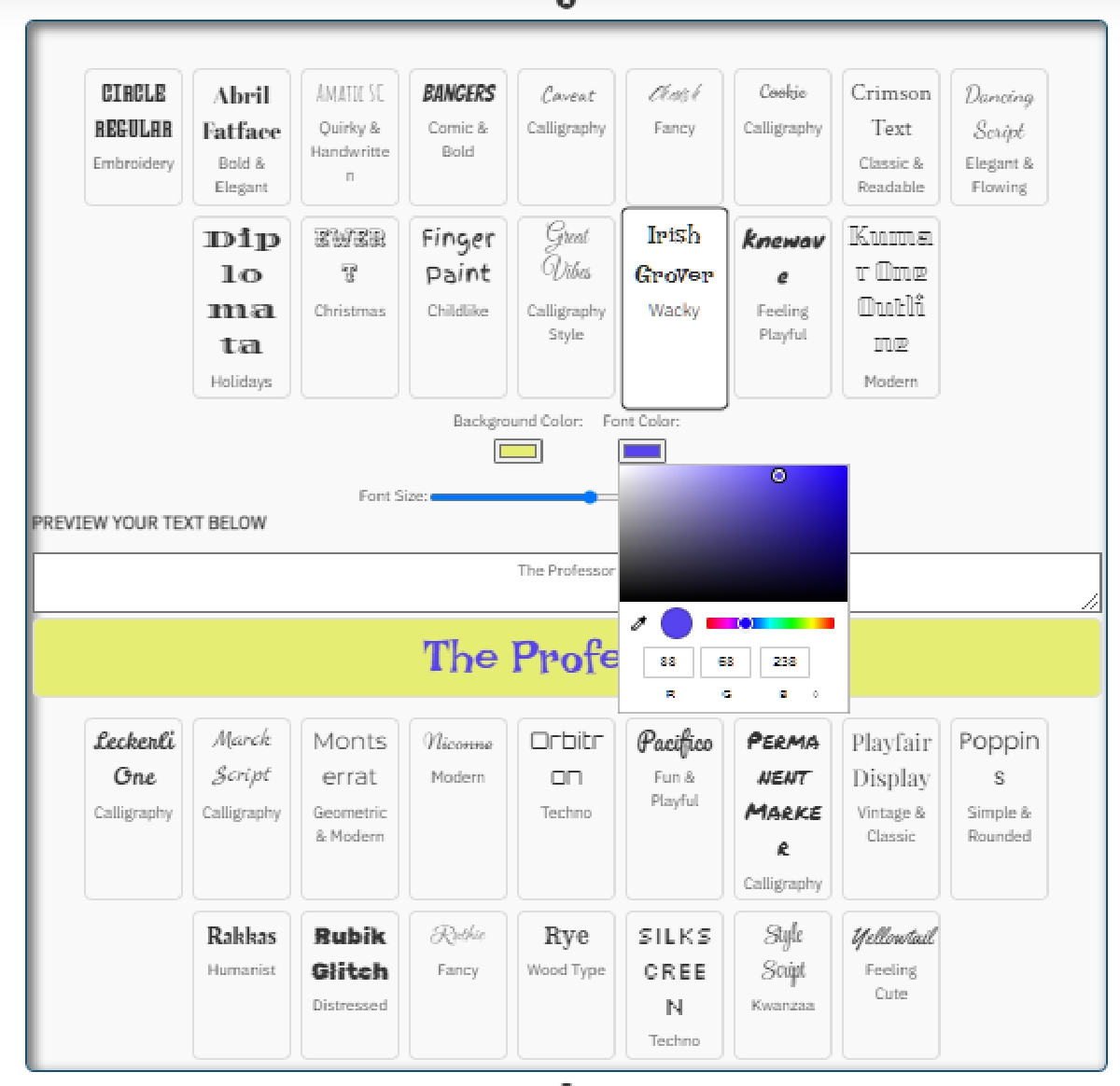17 Oct


How to Spot Suspicious Business Websites: A Professional's Guide
As someone who works in web hosting and SEO, I'm often asked: "How do you know if a website is legitimate?" Here's the checklist I use—and you can too.Why This Matters
With AI making it easier than ever to create professional-looking websites in minutes, appearances can be deceiving. A sleek design doesn't mean a trustworthy business. I'm writing this because I've recently encountered several operations that looked legitimate on the surface but had concerning signs underneath.This isn't about calling anyone out-it's about giving you tools to protect yourself.
The Red Flags Checklist
Red Flag #1: Missing or Hidden WHOIS Data
What is WHOIS?Every domain registration includes public information about who owns it, when it was registered, and when it expires. Even when privacy protection is used, you should still see:
If a WHOIS lookup returns absolutely nothing -no registrar, no dates, no information at all—that's extremely unusual. In 15+ years of web hosting, I've never seen a legitimate established business with completely blank WHOIS data.
How to Check:
Try this challenge: Find a legitimate, established business website that returns ZERO WHOIS information. It's nearly impossible.
Red Flag #2: Multiple Phone Numbers
The Red Flag: If you find 3-4 different phone numbers across:...that's concerning. Legitimate businesses have consistent contact information.
Why it matters:Multiple numbers can indicate:
Red Flag #3: The "Affiliate Army" Model
The Red Flag:Multiple Facebook pages/profiles, all appearing to represent the same company, but run by different individuals. You'll notice:
Why it matters:
While affiliate marketing is legitimate, this distributed approach makes it impossible to:
Red Flag #4: Review Desert
The Red Flag:Why it matters:
Followers can be bought. Reviews from genuine customers cannot. A legitimate business with 30K followers and years of operation should have hundreds of organic reviews.
What to check:
Red Flag #5: AI-Generated or Template Website
The Red Flag:Generic stock photos throughout
Why it matters:
AI can create a convincing website in 30 minutes. But AI can't create:
Check the Wayback Machine: archive.org/web
Enter the domain and see how long the site has really existed.
Red Flag #6: Shopify + High-Value Items
Important Note: Shopify itself is legitimate and used by many real businesses.The Red Flag:
When Shopify is used for high-value items (vehicles, heavy equipment, containers, real estate) WITHOUT:
Why it matters:
Shopify stores are:
For high-value purchases, you want a company with infrastructure, not just a storefront.
Red Flag #7: Free Email Addresses (Gmail, Yahoo, Hotmail)
The Red Flag:The business contact email is:
Why it matters:
Professional email using your domain name costs roughly $6/month through Google Workspace or Microsoft 365. If a company claiming:
...won't invest $6/month in a branded email address, that's a major warning sign.
What it signals:The Exception:
Brand new businesses (under 1-2 years) with tight budgets—especially crafters, makers, or local service providers—might use Gmail initially while getting established. That's understandable when starting out.
When it becomes a red flag:
Note on cost: Many domain registrars and hosting providers include email FREE or very cheap with domain registration (Namecheap, cPanel hosting, Zoho free tier). For businesses already paying for hosting, there's often no additional cost for professional email.
Red flag intensifies when:
The website domain exists but they're STILL using Gmail instead of their own domain email. This means they own the domain but actively choose not to connect professional email—which raises questions about permanence and accountability.
Red Flag #8: Engagement Group Farming
The Red Flag:Brand new business pages that immediately:
Why it matters:
This is a social media growth hack to create artificial legitimacy. Real businesses build followers through:
What Legitimate Businesses Look Like
For comparison, here's what you SHOULD see:WHOIS Data: Even if privacy-protected, shows registrar, dates, and technical details
Consistent Contact: Same phone, same address, same email across all platforms
Clear Ownership: Obvious who runs the company, clear brand identity
Review History: Mix of positive and negative reviews with responses showing accountability
Real Content: Specific projects, real team photos, authentic history
Professional Platform: Appropriate tools for their industry
Organic Growth: Steady follower growth, genuine engagement over time
What To Do If You Spot These Red Flags
Don't engage immediately. Instead:1. Document what you found (screenshots, notes)
2. Do additional research:
3. Trust your gut - if it feels wrong, walk away
4. Report if appropriate:
You don't need proof of fraud to report suspicious patterns. Authorities investigate and determine if it's fraud—your job is just to flag what looks wrong.
Why I'm Sharing This
I'm not trying to be negative or "cause trouble." I work in this industry, and I see how easy it is for convincing-looking operations to deceive people. The tools I've shared here are the same ones I use professionally to evaluate potential clients, partners, and vendors.You don't have to be a web expert to protect yourself
-you just need to know what to look for.If this helps even one person avoid a bad situation, it's worth sharing.
Tools to Bookmark
Have you encountered suspicious websites? What red flags did you notice? Share your experiences in the comments - helping others learn keeps everyone safer.

 29 years of #TheProfessor
29 years of #TheProfessor

 12% rewards for affiliate members
12% rewards for affiliate members
Leave a Comment